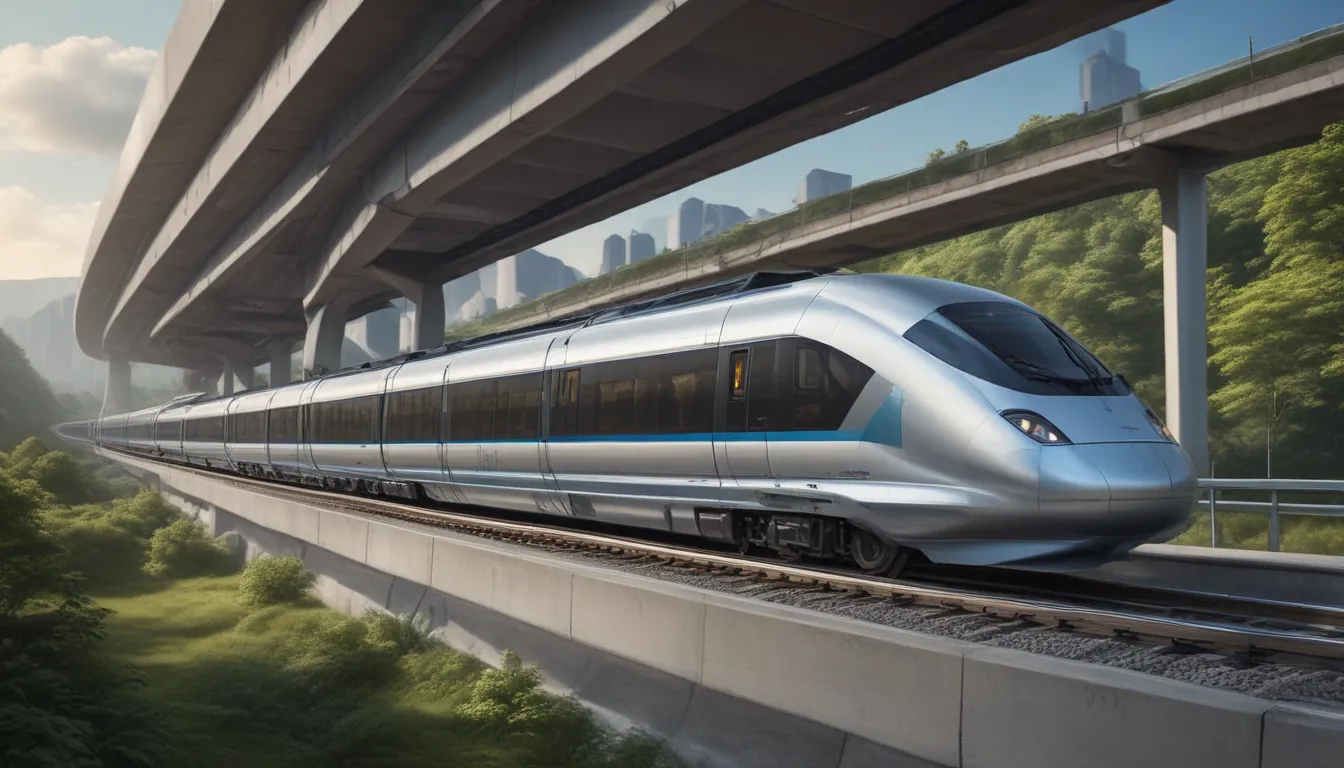A Note About Images: The images used in our articles are for illustration purposes only and may not exactly match the content. They are meant to engage readers, but the text should be relied upon for accurate information.
Welcome to the future of transportation with maglev trains! These innovative marvels of engineering, short for “magnetic levitation” trains, have taken the world by storm with their impressive speed, energy efficiency, and potential to redefine the way we travel. In this article, we will delve into the fascinating world of maglev trains, uncovering 19 captivating facts about their history, technology, benefits, and impact on the transportation industry. Join us on a journey through the realm of maglev trains as we explore the mysteries and marvels of these extraordinary vehicles that defy gravity and push the boundaries of modern transit.
The Magnificent World of Maglev Trains
- The First Commercial Maglev Train: The first commercial maglev train, known as the Linimo, began operations in Aichi, Japan, in 1984, marking a revolutionary milestone in transportation history.
- Staggering Speeds: Maglev trains are capable of reaching astounding speeds, with the record currently set at an incredible 375 mph (603 km/h) achieved by the L0 Series maglev train during a test run. This velocity surpasses that of traditional high-speed trains, making maglev technology a compelling prospect for the future of rapid transit.
- Electromagnetic Propulsion: At the core of maglev technology lies electromagnetic propulsion, a cutting-edge concept that propels the trains forward using powerful magnets and magnetic elements on the track.
- Smooth and Quiet Ride: Compared to traditional trains, maglev trains provide an incredibly smooth and quiet ride, thanks to the absence of physical contact between the train and the track, as well as advanced suspension and stabilization systems.
Shanghai’s Fastest Maglev Marvel
- Shanghai’s High-Speed Delight: Shanghai is home to the world’s fastest commercial maglev train, the Shanghai Maglev Train, reaching an impressive top speed of 267 mph (430 km/h). This high-speed marvel has significantly reduced travel times for commuters and visitors to the bustling metropolis, showcasing the potential of maglev trains to revolutionize urban transportation.
- Urban Transportation Revolution: Maglev trains hold the potential to transform urban transportation networks by significantly reducing travel times and offering a sustainable mode of transit, alleviating congestion in densely populated areas.
Precision and Innovation in Maglev Construction
- Meticulous Precision: The construction of maglev tracks requires meticulous precision to ensure optimal performance and safety. The alignment and placement of magnetic elements along the track must adhere to stringent standards to facilitate seamless operation at high speeds.
- Engineless Propulsion: Maglev trains are propelled without traditional engines, relying solely on the electromagnetic propulsion system to reduce reliance on fossil fuels and minimize environmental impact.
Global Interest in Maglev Technology
- Global Development: The development of maglev technology has sparked global interest, with countries like the United States, Germany, Japan, and China exploring the implementation of maglev train systems to enhance transportation infrastructure and connectivity.
- Energy Efficiency: In addition to their impressive speed and performance, maglev trains are celebrated for their exceptional energy efficiency, positioning them as a sustainable and eco-friendly mode of transportation.
The Future of Transit: Maglev Marvels
- Exciting Possibilities: Maglev technology presents exciting possibilities for intercity travel, offering swift and seamless connections between major urban centers with the potential to redefine the concept of intercity commuting.
- Investment in Infrastructure: The development of maglev train systems requires significant investment in infrastructure, including specialized tracks, stations, and maintenance facilities. Despite the initial outlay, the long-term benefits of maglev technology in transportation efficiency and environmental sustainability make it a compelling consideration for transit networks.
Safety and Environmental Sustainability
- Impressive Safety Features: Maglev trains are equipped with state-of-the-art safety features, including advanced collision avoidance systems and fail-safe mechanisms, prioritizing passenger and crew well-being.
- Low Environmental Impact: In comparison to traditional modes of transportation, maglev trains exhibit a relatively low environmental impact, with reduced energy consumption, minimal noise pollution, and zero emissions during operation.
A Glimpse into the Future of Transportation
- Advancements and Refinements: Maglev technology continues to undergo advancements and refinements, with ongoing research and development efforts focused on optimizing systems, exploring new materials, and refining operational processes to enhance the capabilities of these remarkable trains.
- Inspiring Awe Worldwide: The advent of maglev technology has inspired awe and fascination worldwide, capturing the imagination of individuals intrigued by high-speed, magnetically levitated trains.
Conclusion: Riding Towards a Sustainable Future with Maglev Trains
As we navigate the world of maglev trains, we witness the convergence of technology and transportation, paving the way for a new era of sustainable and high-speed transit. With their remarkable speed, energy efficiency, and potential to transform urban and intercity travel, maglev trains offer a glimpse into the future of transit. Despite logistical challenges, the development and integration of maglev technology into existing transportation networks present exciting opportunities to revolutionize public transit. Let us embark on this journey together and embrace the possibilities that maglev trains offer in shaping the future of transportation infrastructure.
FAQs: Exploring Maglev Trains
- How do maglev trains differ from traditional trains?: Maglev trains use magnetic levitation to hover above tracks, eliminating the need for wheels and reducing friction, resulting in faster speeds and smoother rides.
- Are maglev trains environmentally friendly?: Yes, maglev trains are environmentally friendly, producing zero emissions during operation and reducing reliance on fossil fuels for transportation.
As we conclude our exploration of maglev trains, we invite you to join us in embracing the future of sustainable and high-speed transit with these remarkable vehicles. Trust in our commitment to delivering engaging and trustworthy content as we uncover the wonders of maglev technology and its potential to reshape the landscape of modern transportation.






